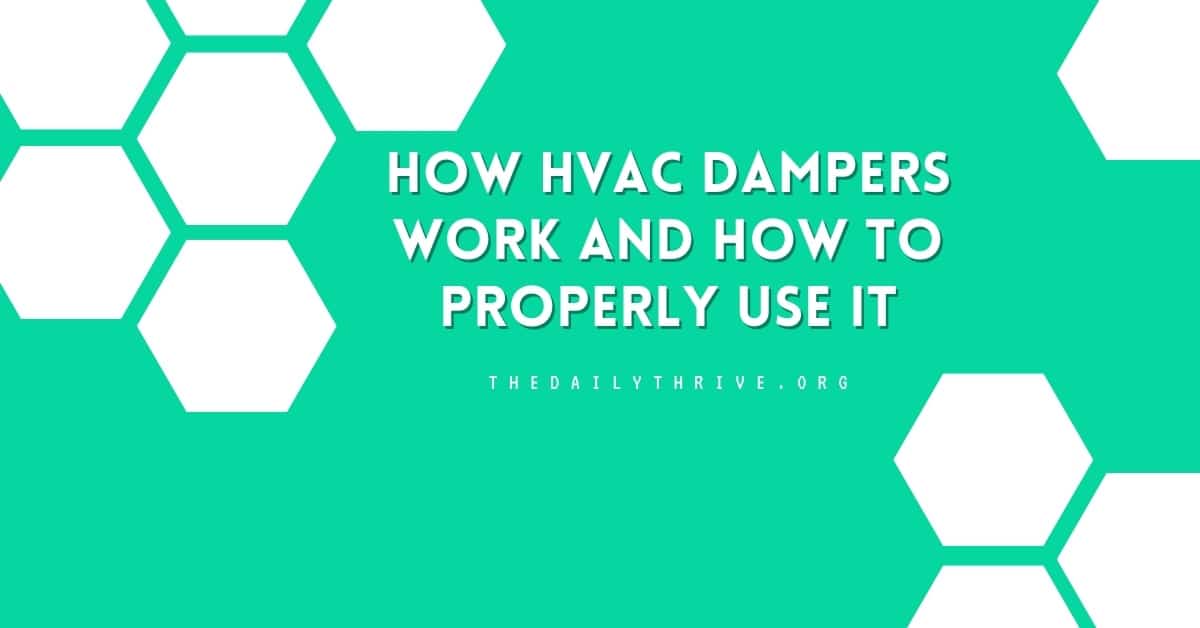How do HVAC dampers work, and how to properly use them? If you own a home equipped with central heating and air conditioning, you know that when the system turns on, your entire home is being serviced all at once. This is a convenient way to maintain a comfort level within your home. You set the thermostat once, and the system kicks in when it needs to, and it stops running when the desired temperature is reached.
The downside to this approach which is used in 99.9% per cent of the homes in the US, is that the temperature is measured in one and only one location; the location of the thermostat.
If you lived your entire life standing in front of the thermostat, then you would be experiencing perfection in-home air conditioning. But of course, that is not how we live our lives. We move from room to room and turn on appliances that generate heat, and then some rooms are unoccupied for the most part.
The contractors that built the homes and installed the air conditioning systems do their best during construction to route the ducts in the most efficient manner for the anticipated use of each of the rooms, but that is the best guess approach since each family has their dynamics and habits.
The best way to get the most out of your system without incurring additional cost is to balance it using the HVAC dampers.
Dampers are the individual covers over each of the duct openings into your rooms. Some homes have them in the ceilings, some are on the floor, and a few rare occasions in the walls.
HVAC dampers come in all shapes and designs, but the one thing that they all have in common is the ability to open and close the vents to varying degrees.
HVAC Dampers Open or Closed
You do not have to be an HVAC professional to properly adjust the dampers to gain energy efficiencies. All it takes is a little common sense.
If a room is not being utilized regularly within your home, close the damper for that room. For rooms that are used more often than not, open them wide.
You can easily calculate the effect that this will have on your overall cooling costs too. Before making any adjustments, have a watch with a second hand available and when your air conditioner cuts off, start timing how long it takes before it turns on again.
Now go ahead and adjust your dampers. Now time for the cycle again. You should find that it takes longer between cycles after the adjustments, which means you are now saving on cooling dollars!
You can also take this concept to the next level with some help. An HVAC professional can measure output at each vent location and install in-line dampers that will more efficiently control the airflow to each location.
In-line HVAC dampers are more efficient than vent cover dampers. They control airflow closer to the source, which means less energy loss in the ducts themselves. In-line dampers can achieve 100% shut-off to a vent which is usually impossible with the vent dampers and eliminates the noise you get when vent dampers are closed.
HVAC zoning is another efficient option if you have hotter or colder areas than others are. It needs to be properly measured and calculated based on any different aspect. Call your local HVAC technician to get some help in zoning system.
By following some common sense energy saving ideas revolving around your home air conditioner, you can effectively save 30% or more of your annaul operating costs. Who doesn’t want to lower their utility bills? Take a few dollars from the money you’ve saved by applying HVAC dampers.






